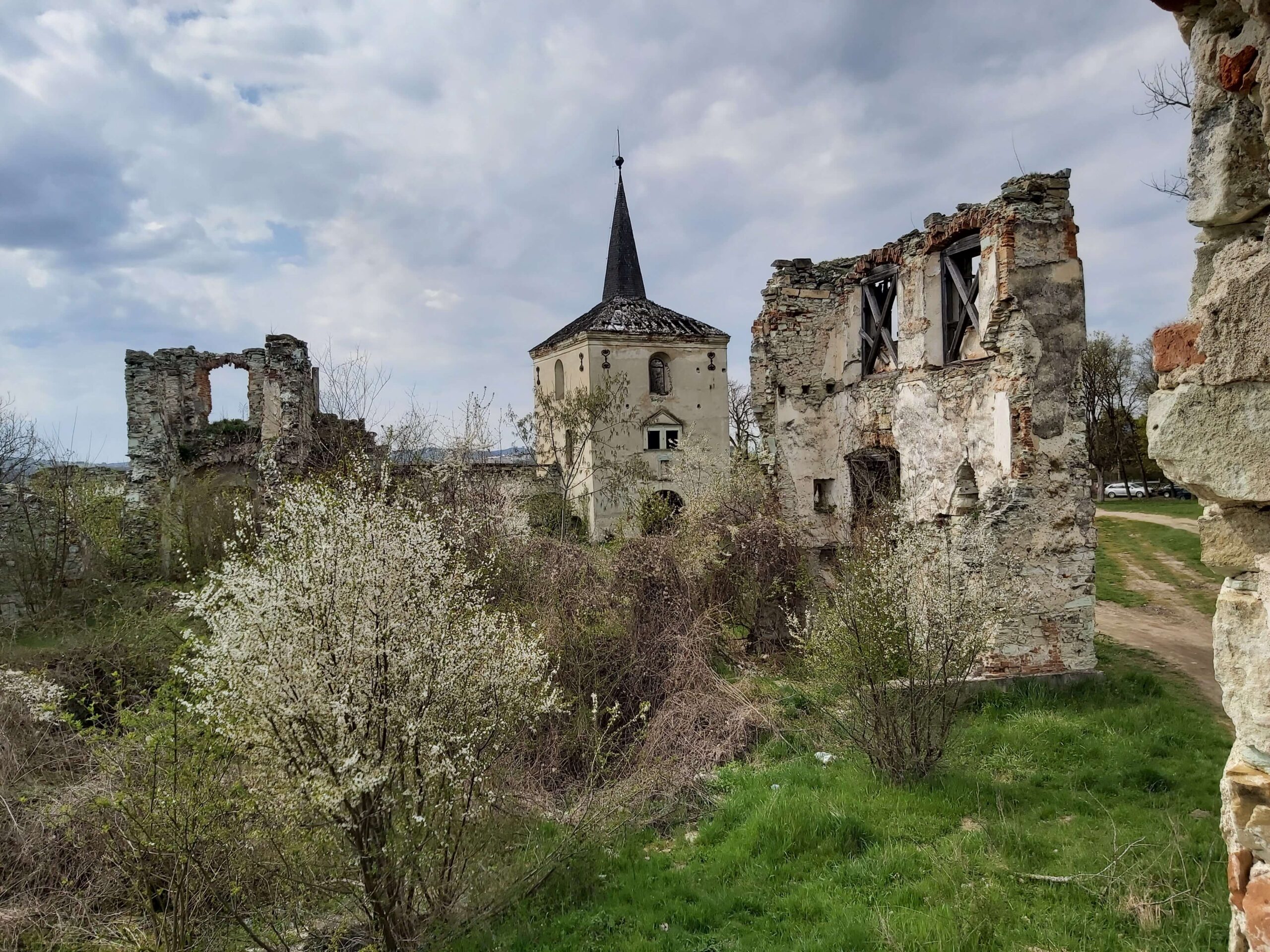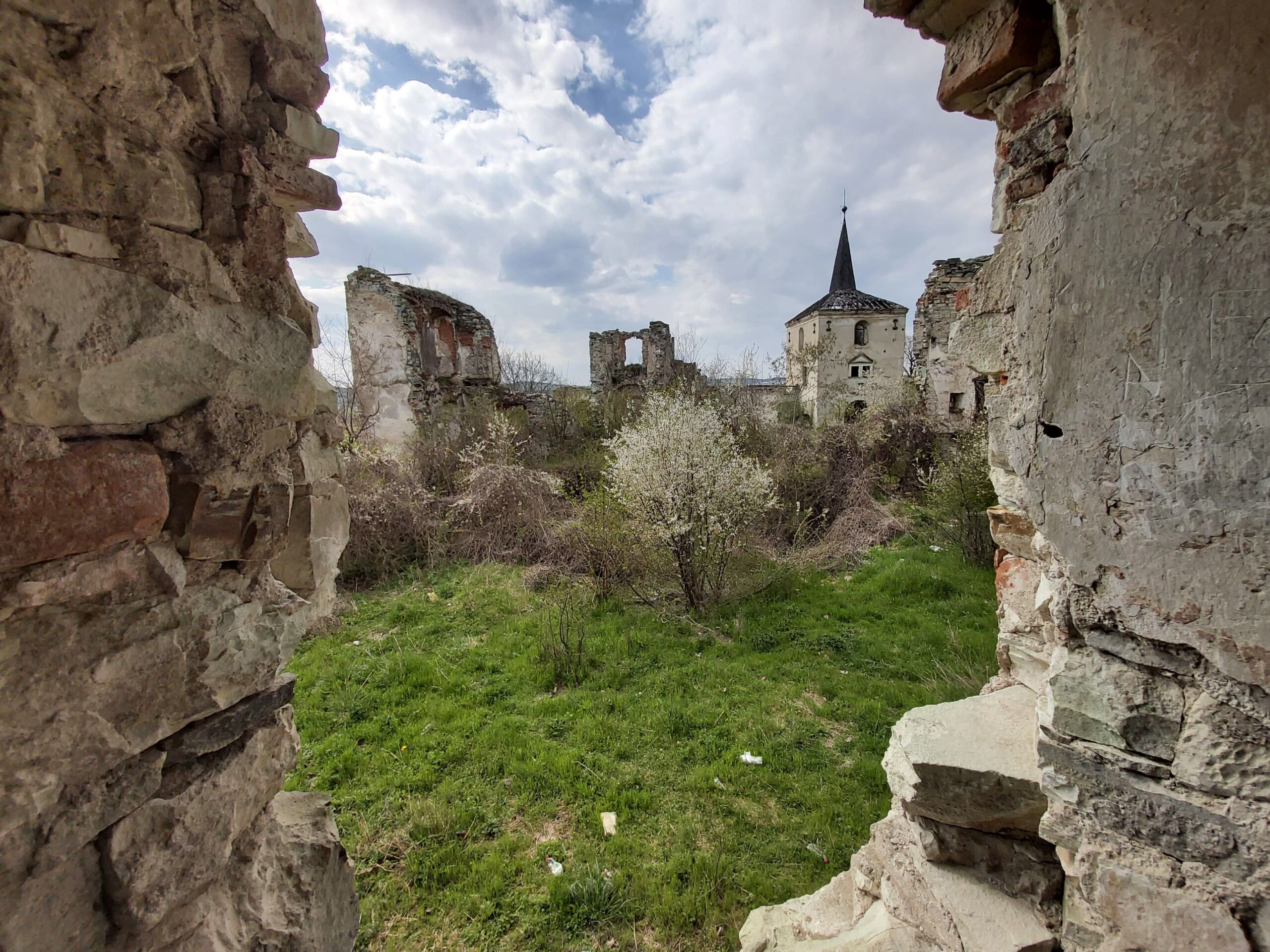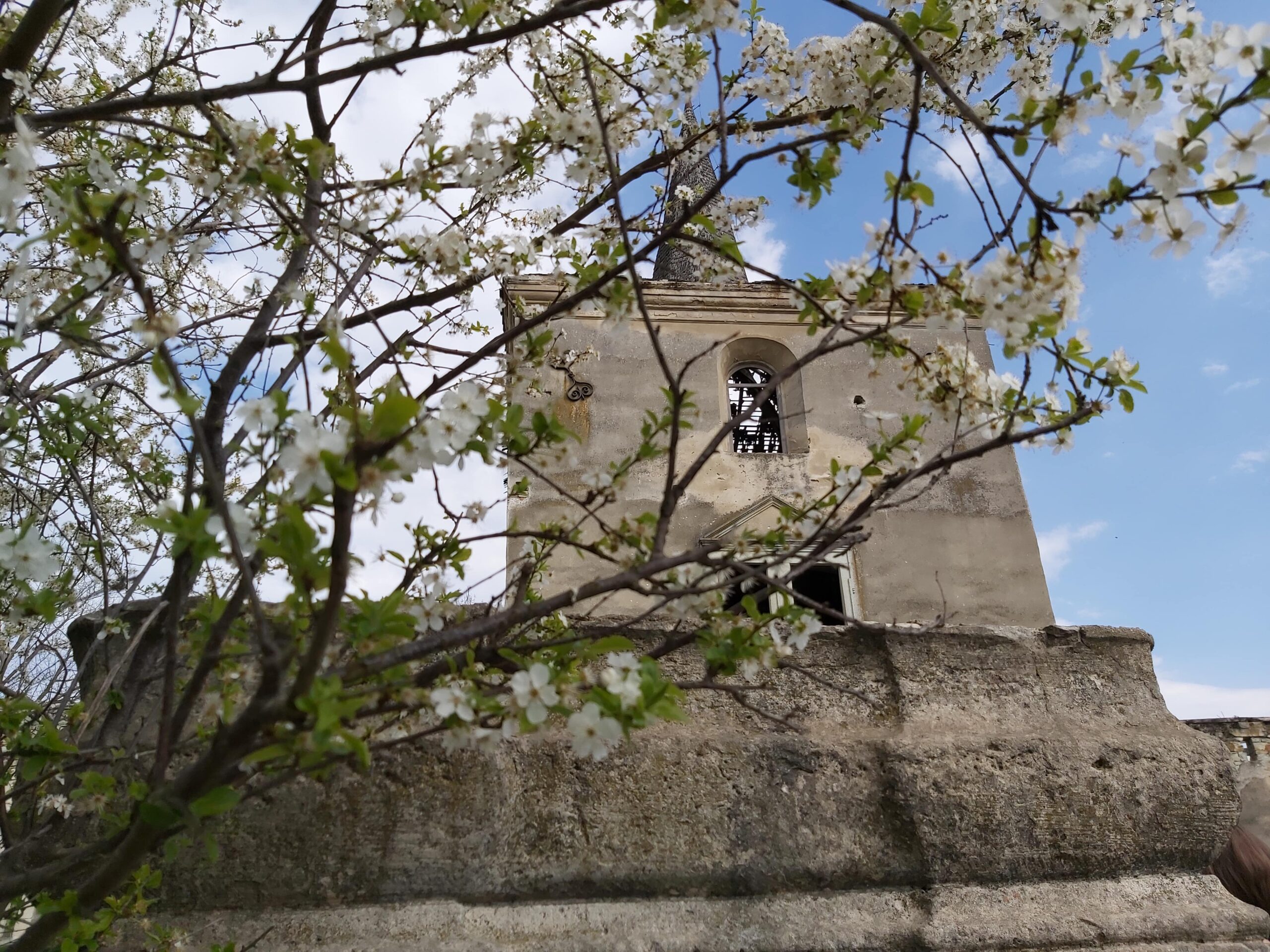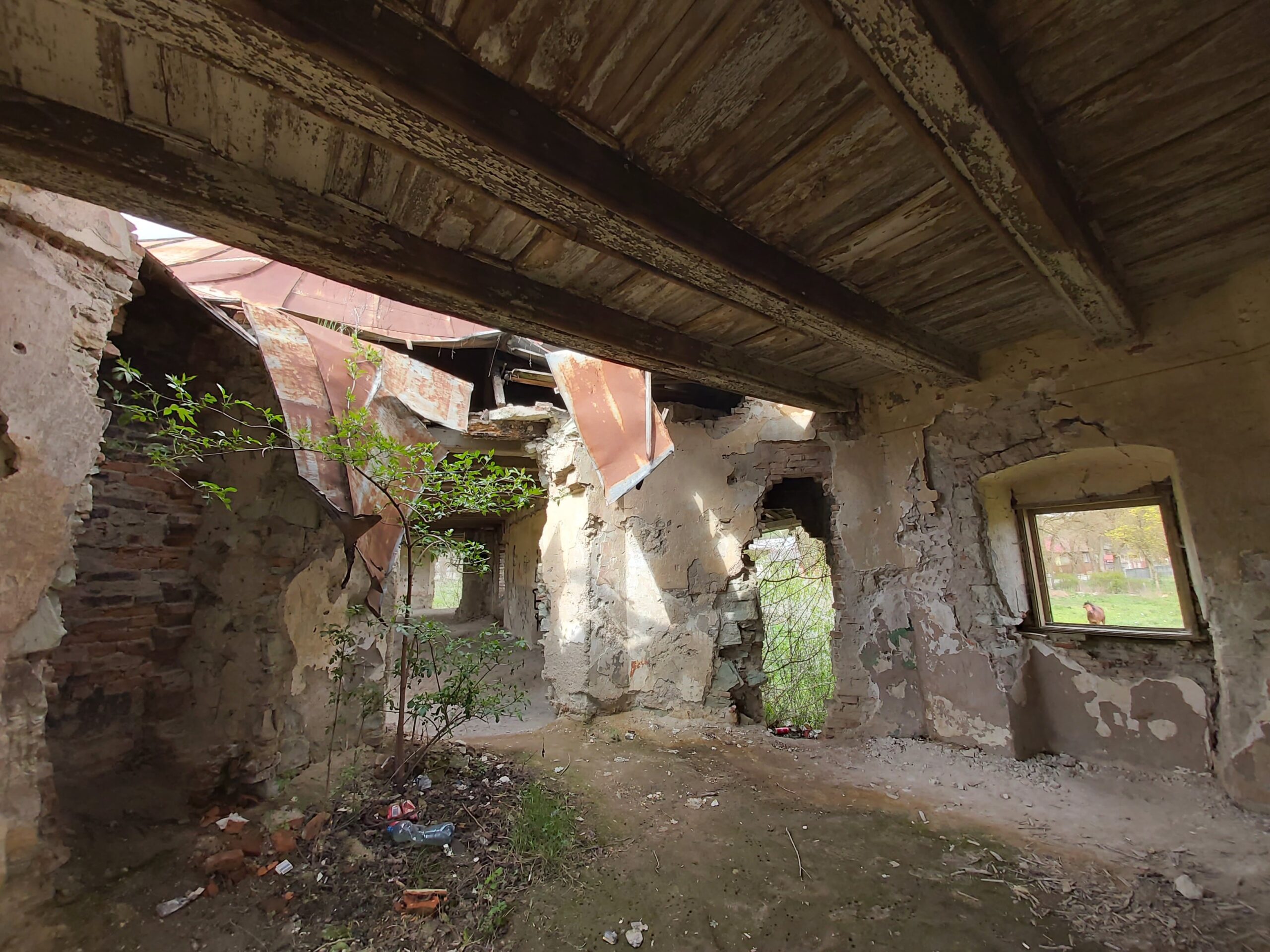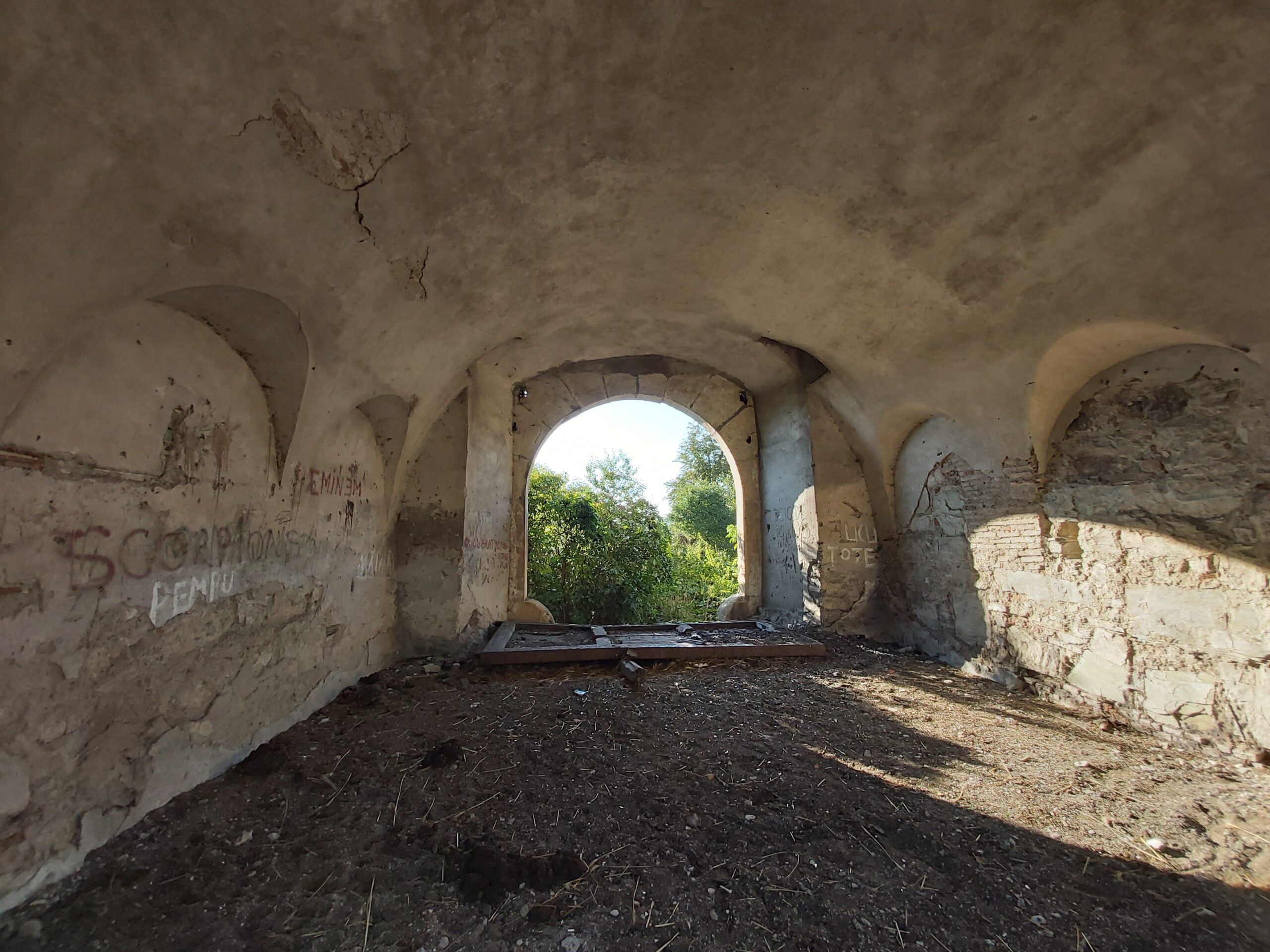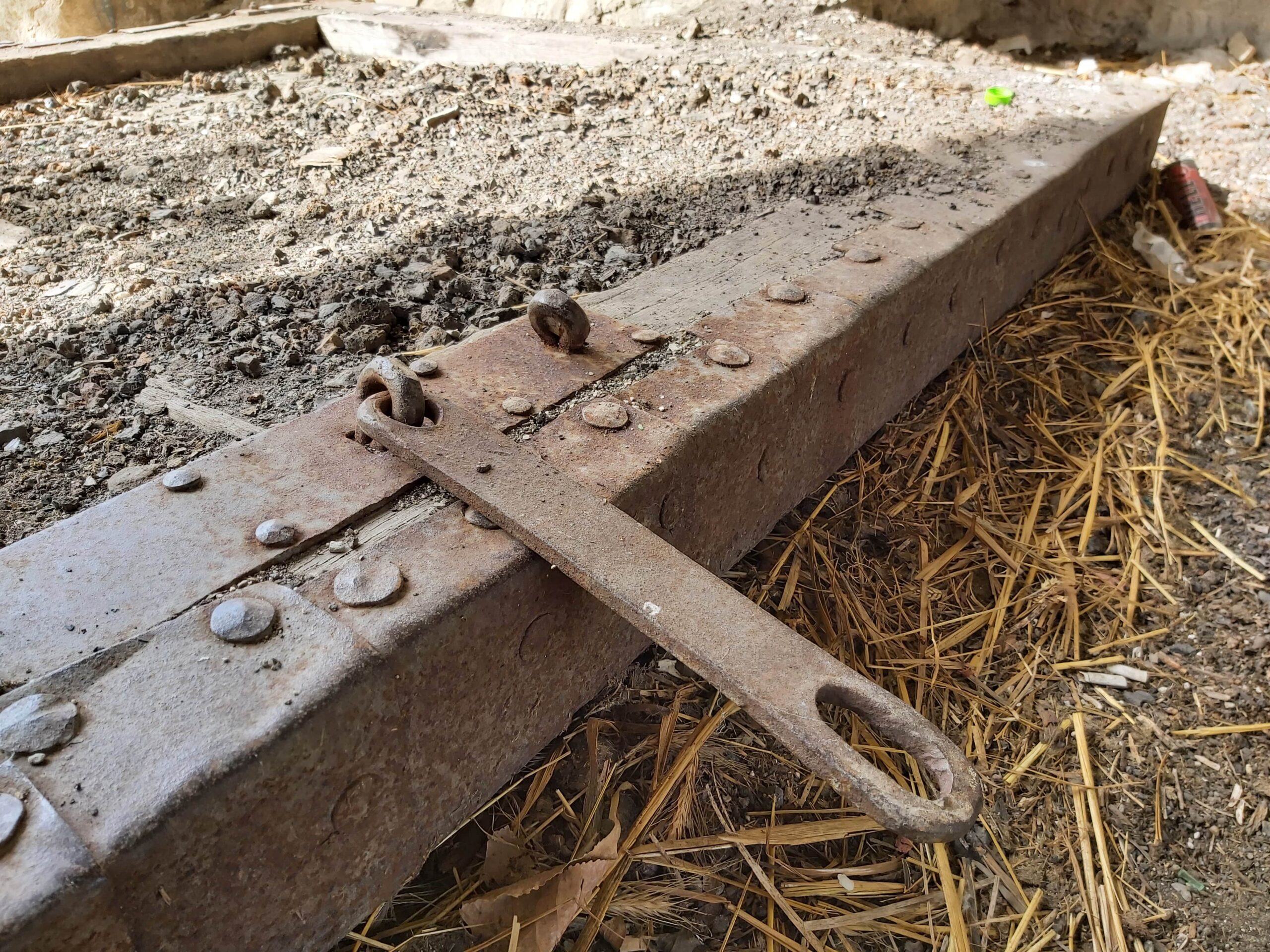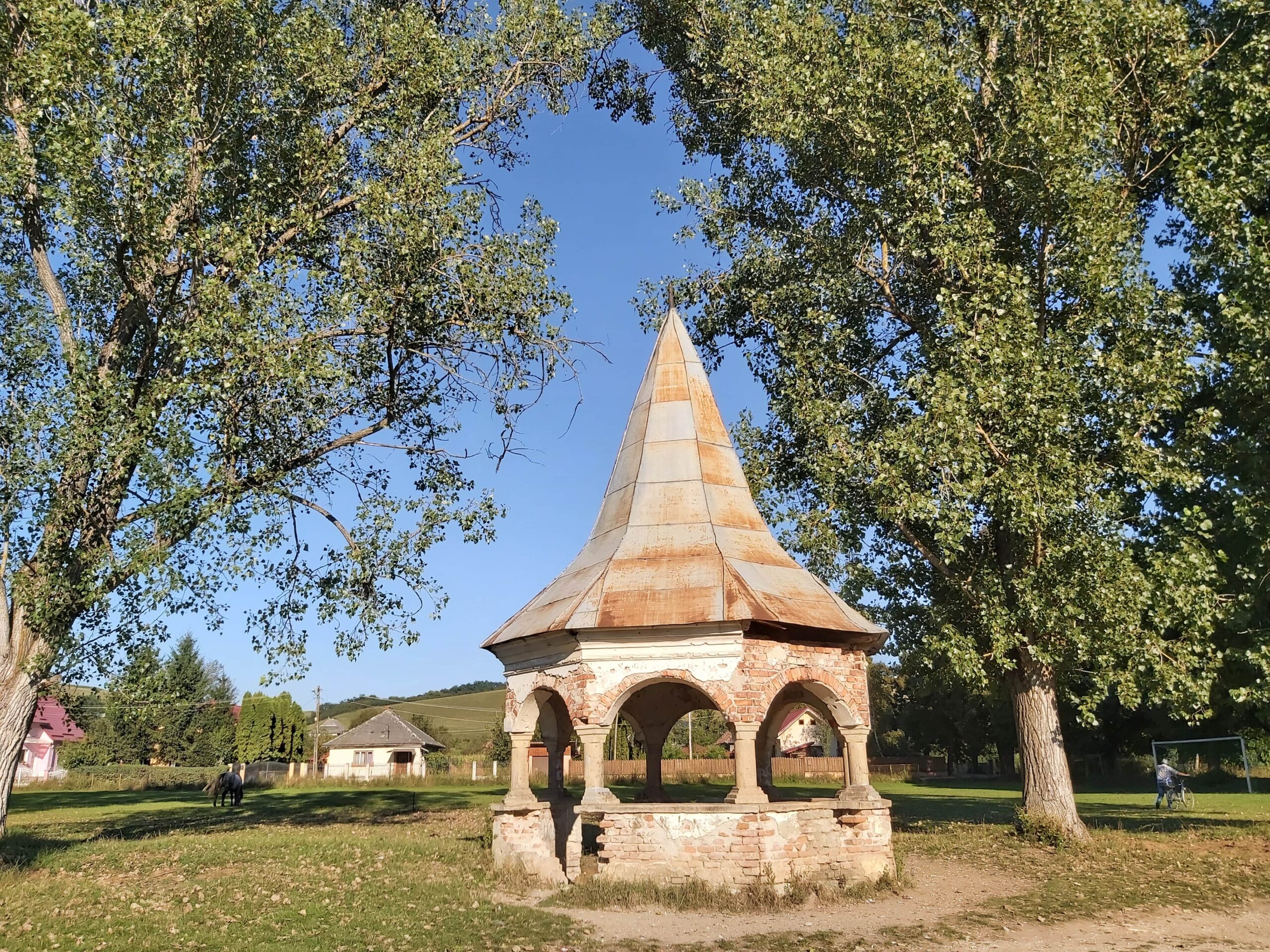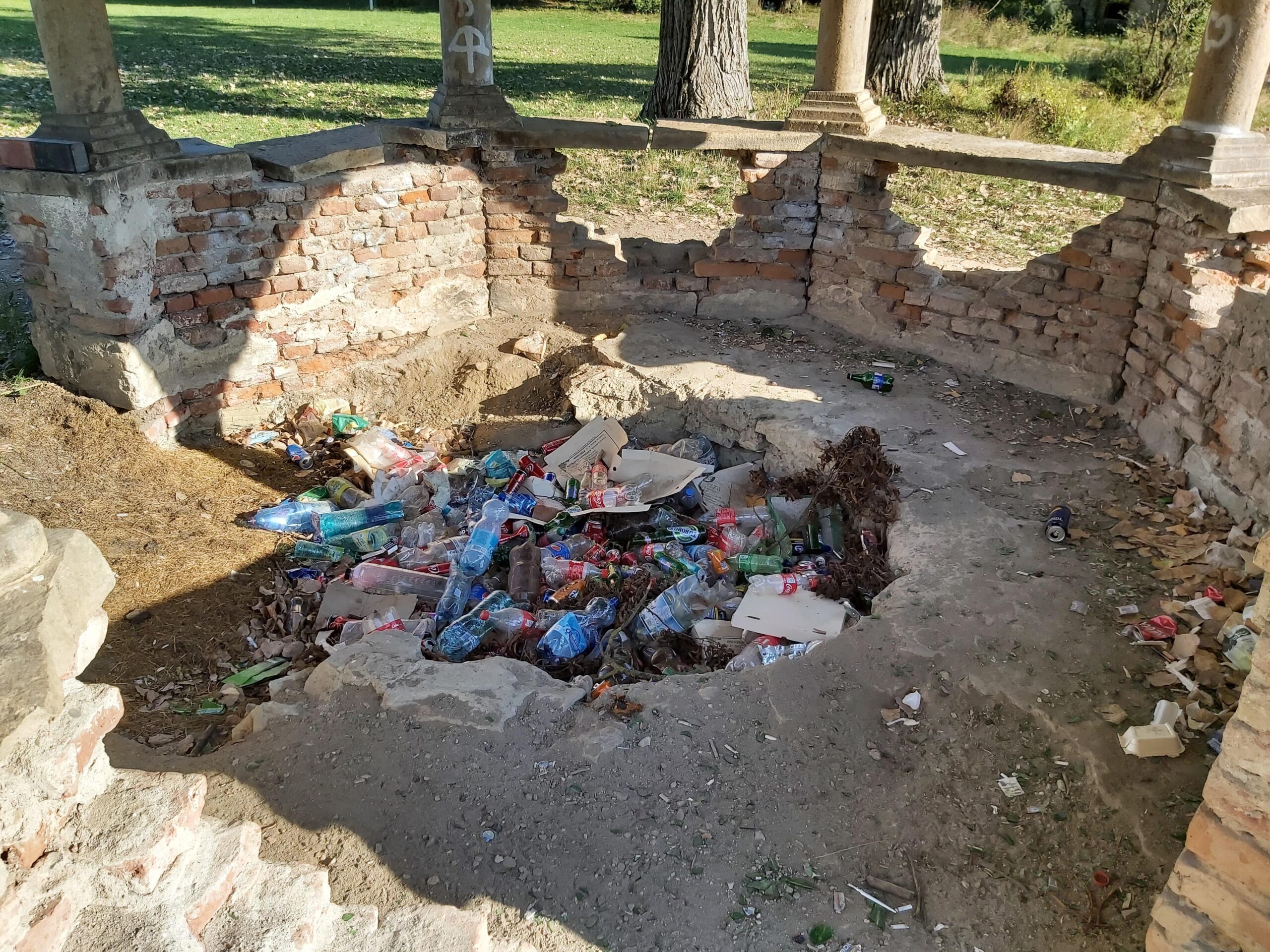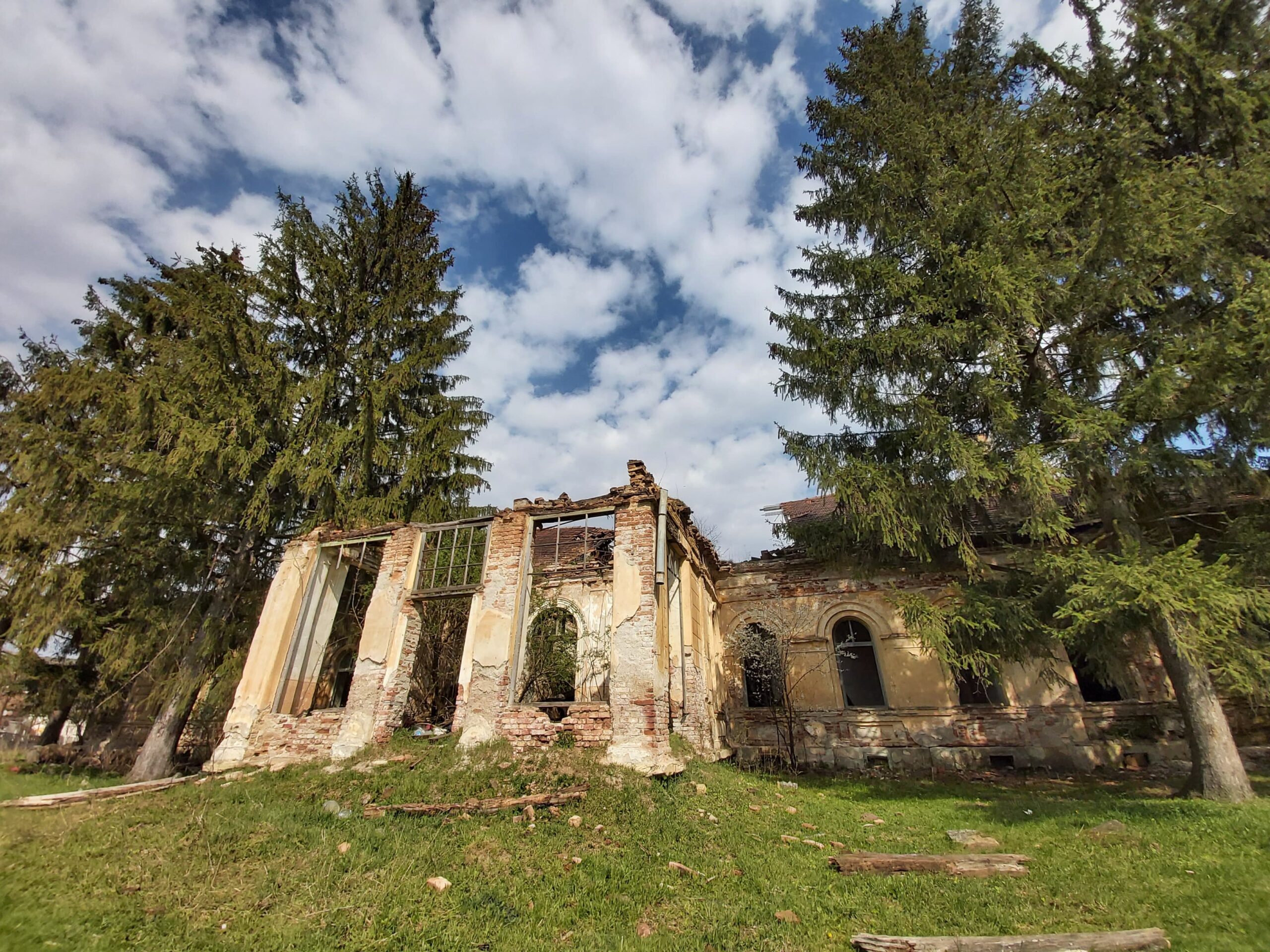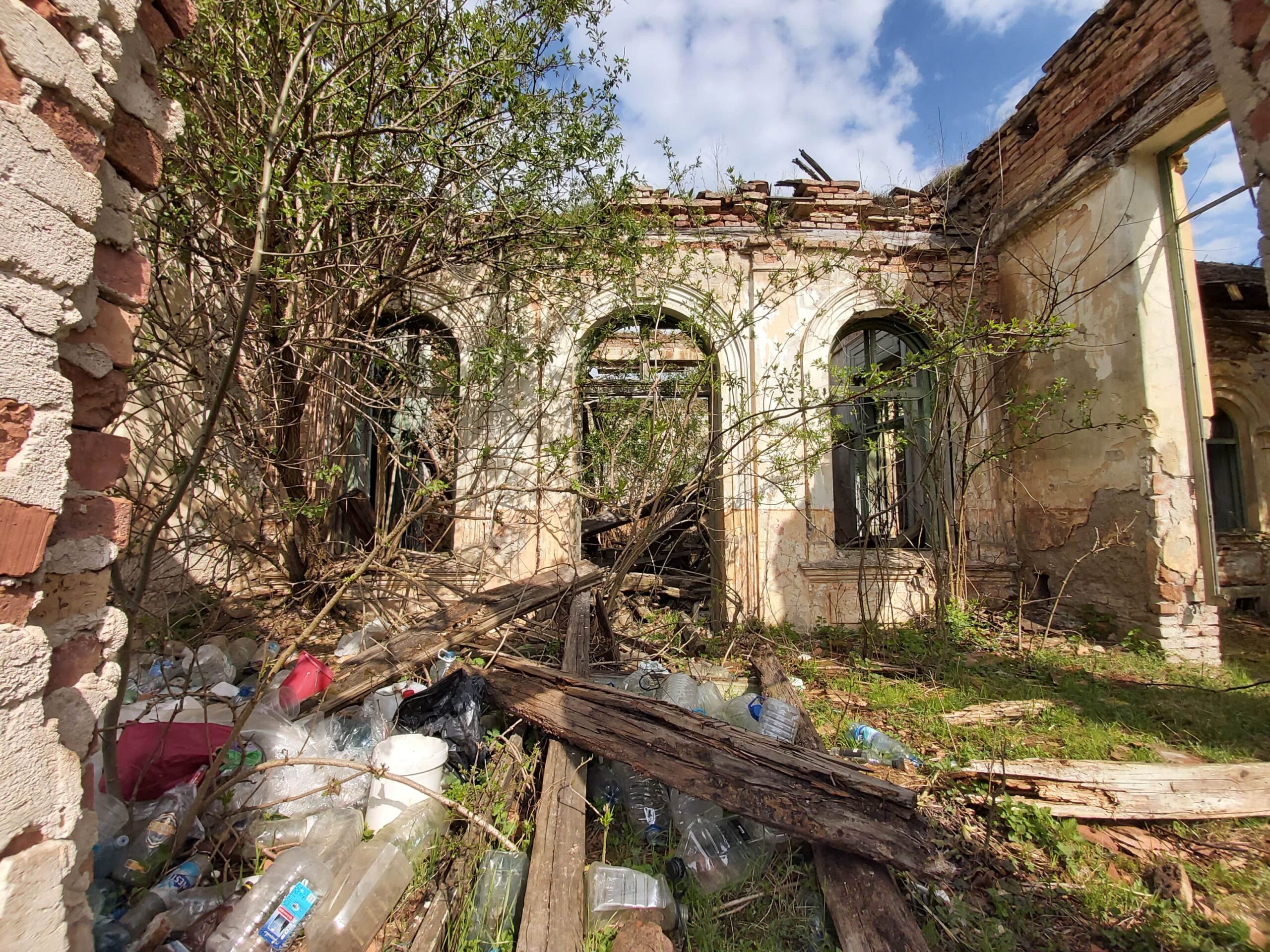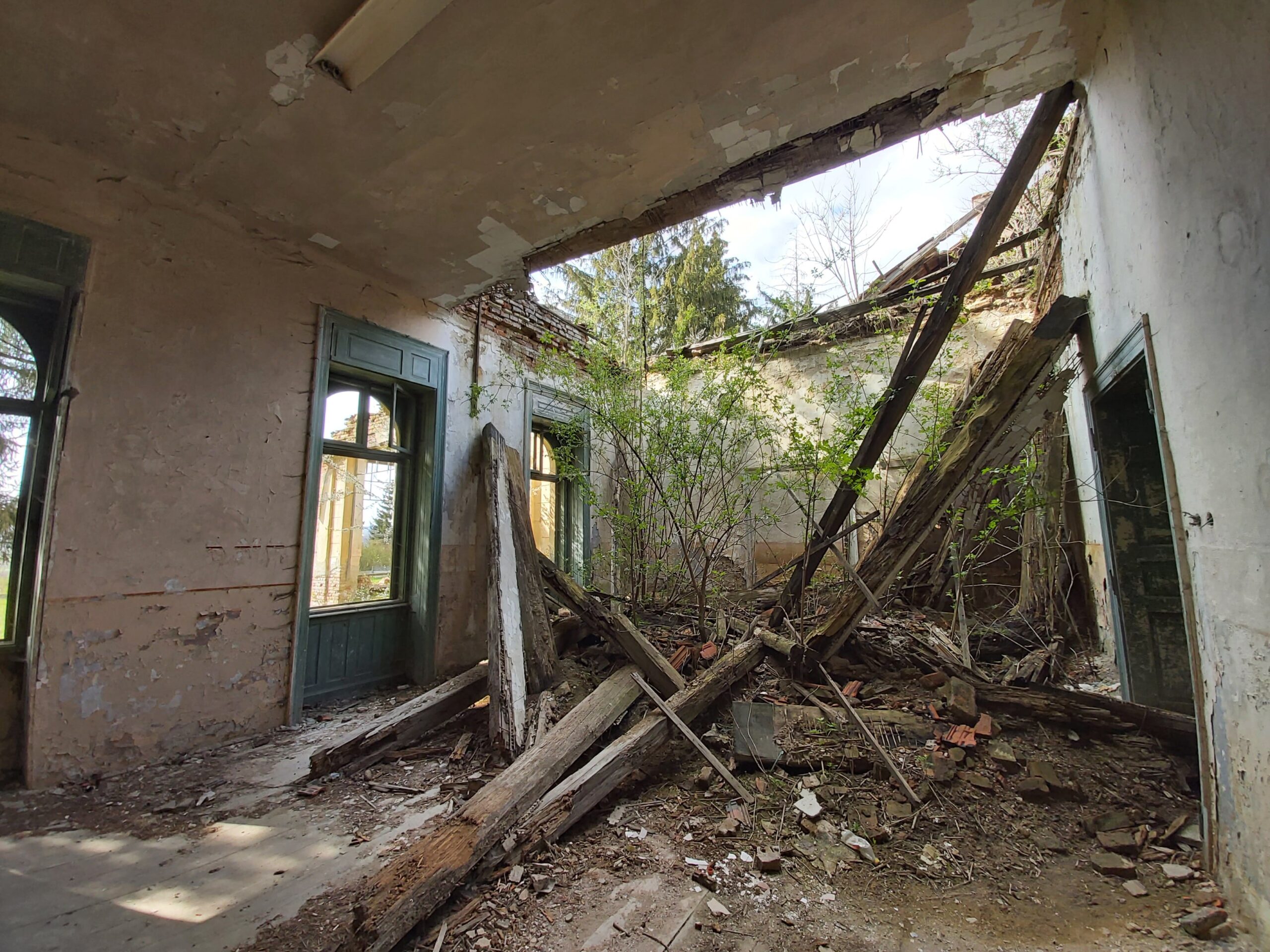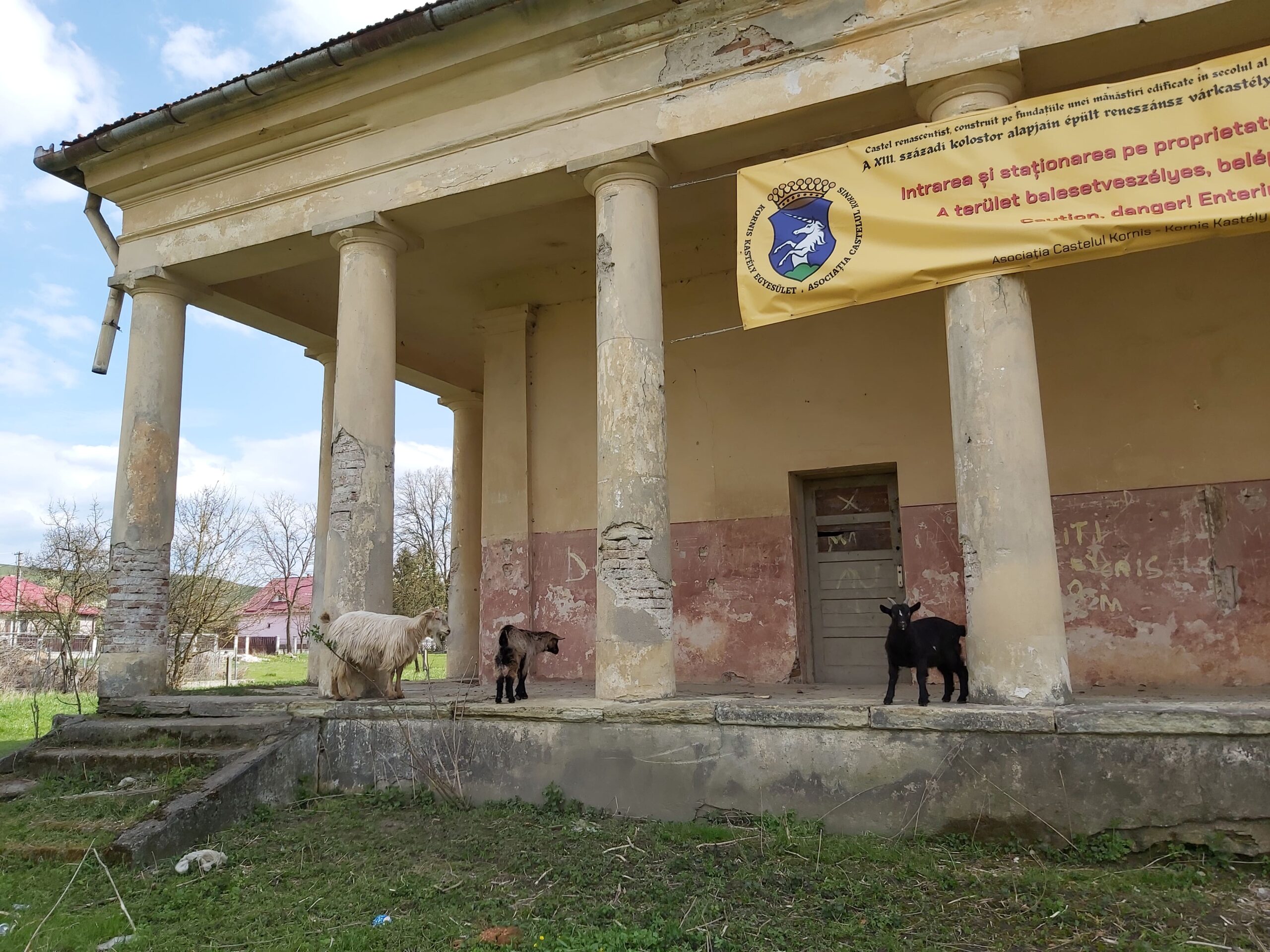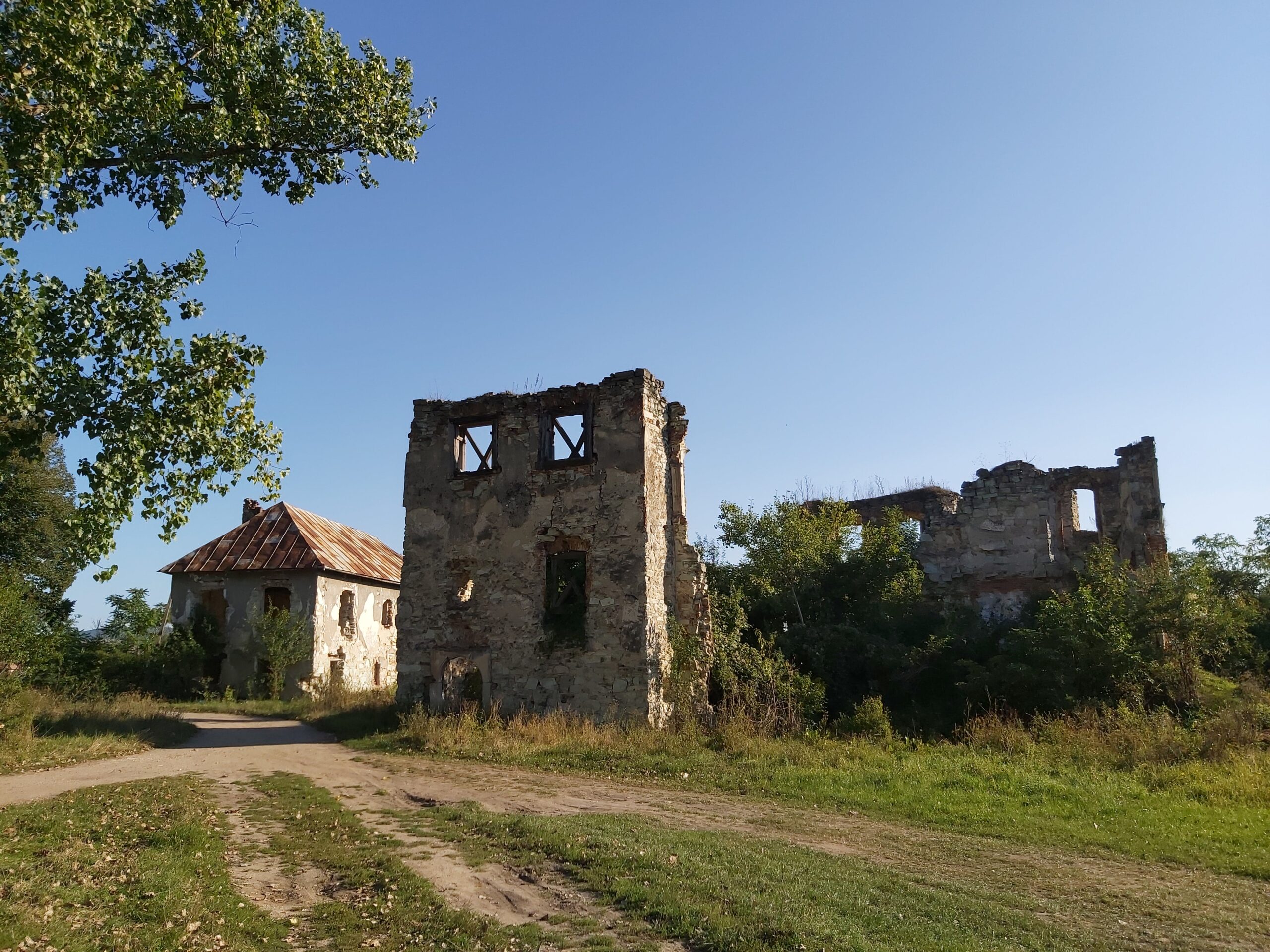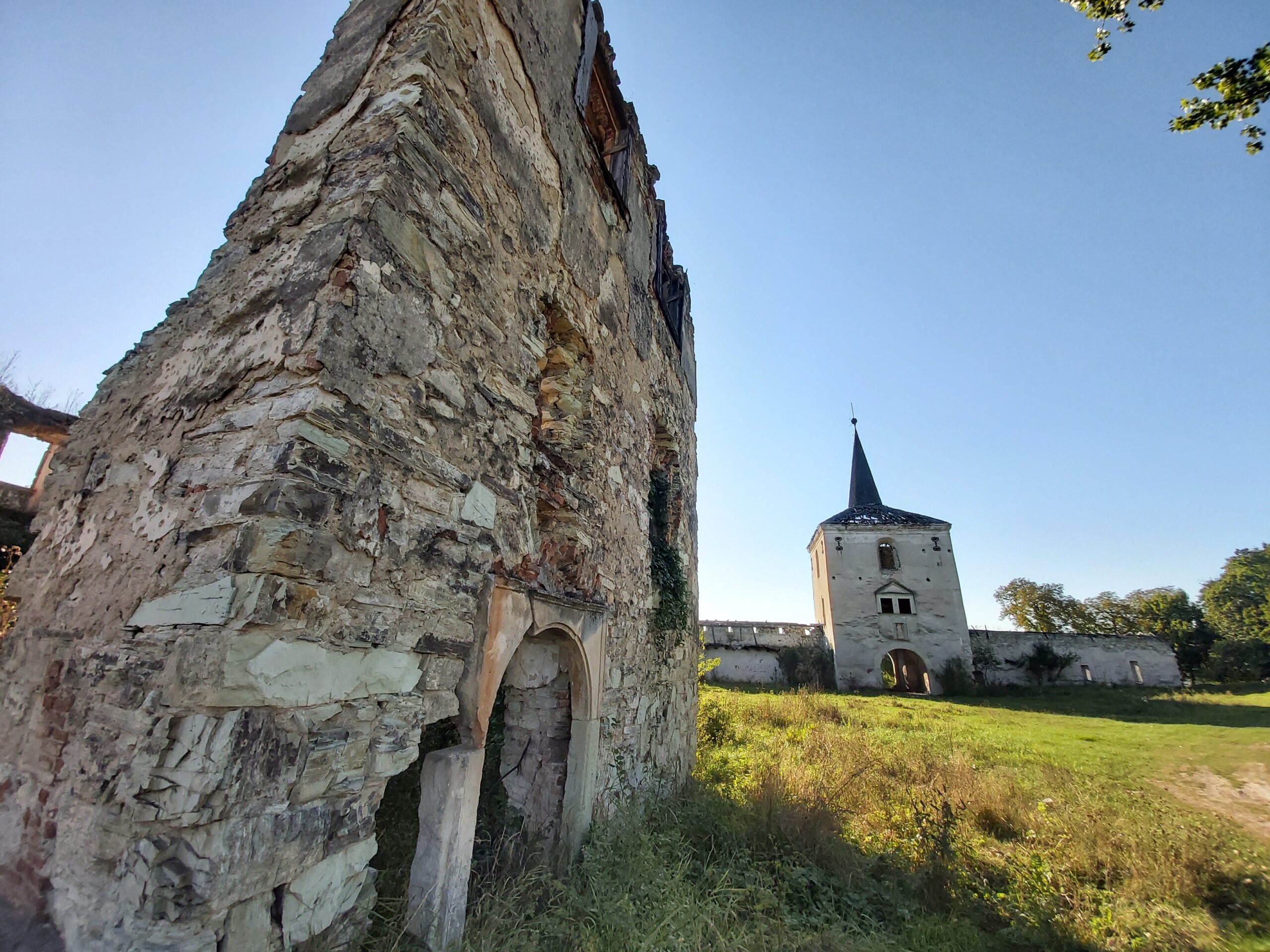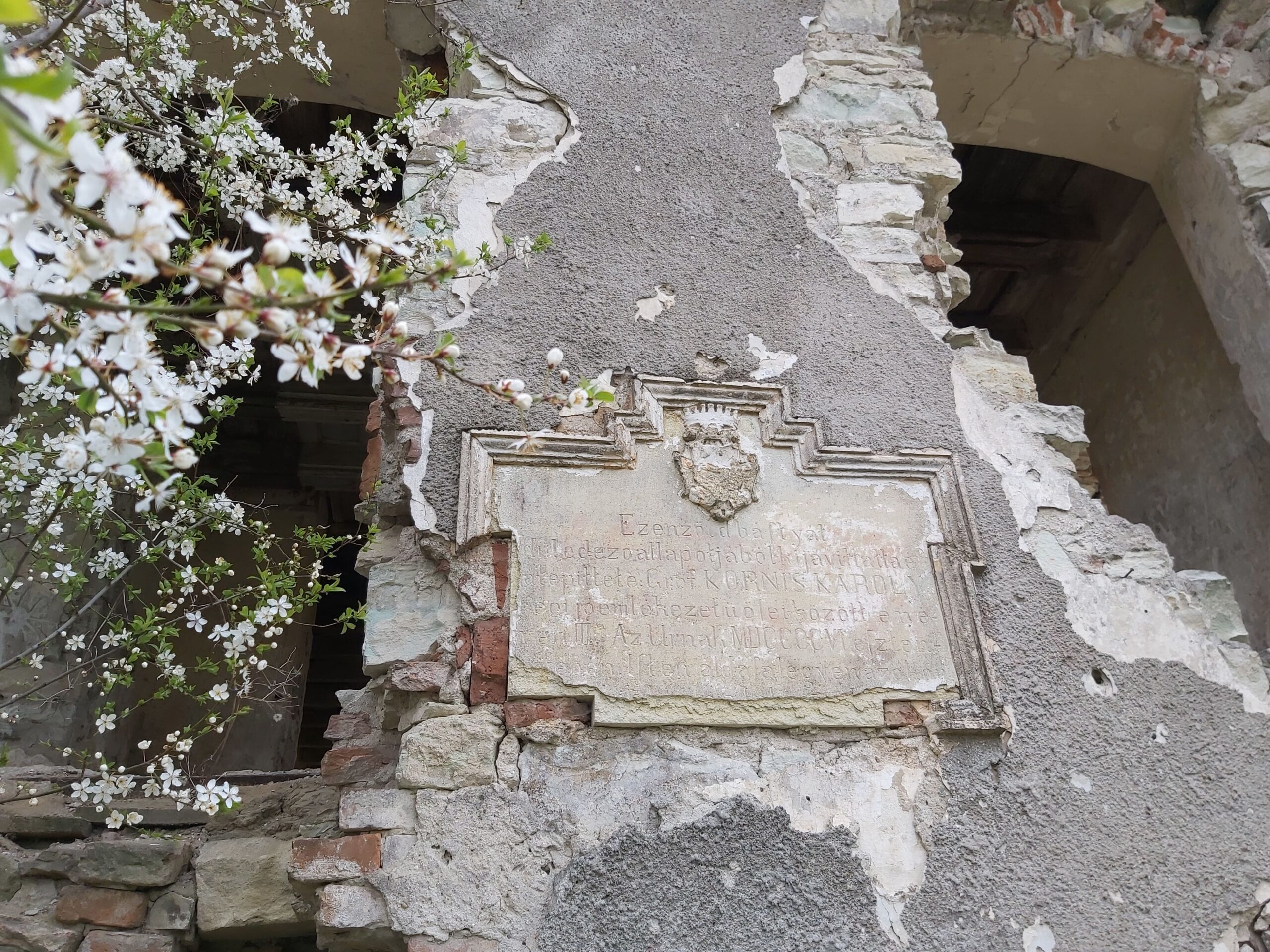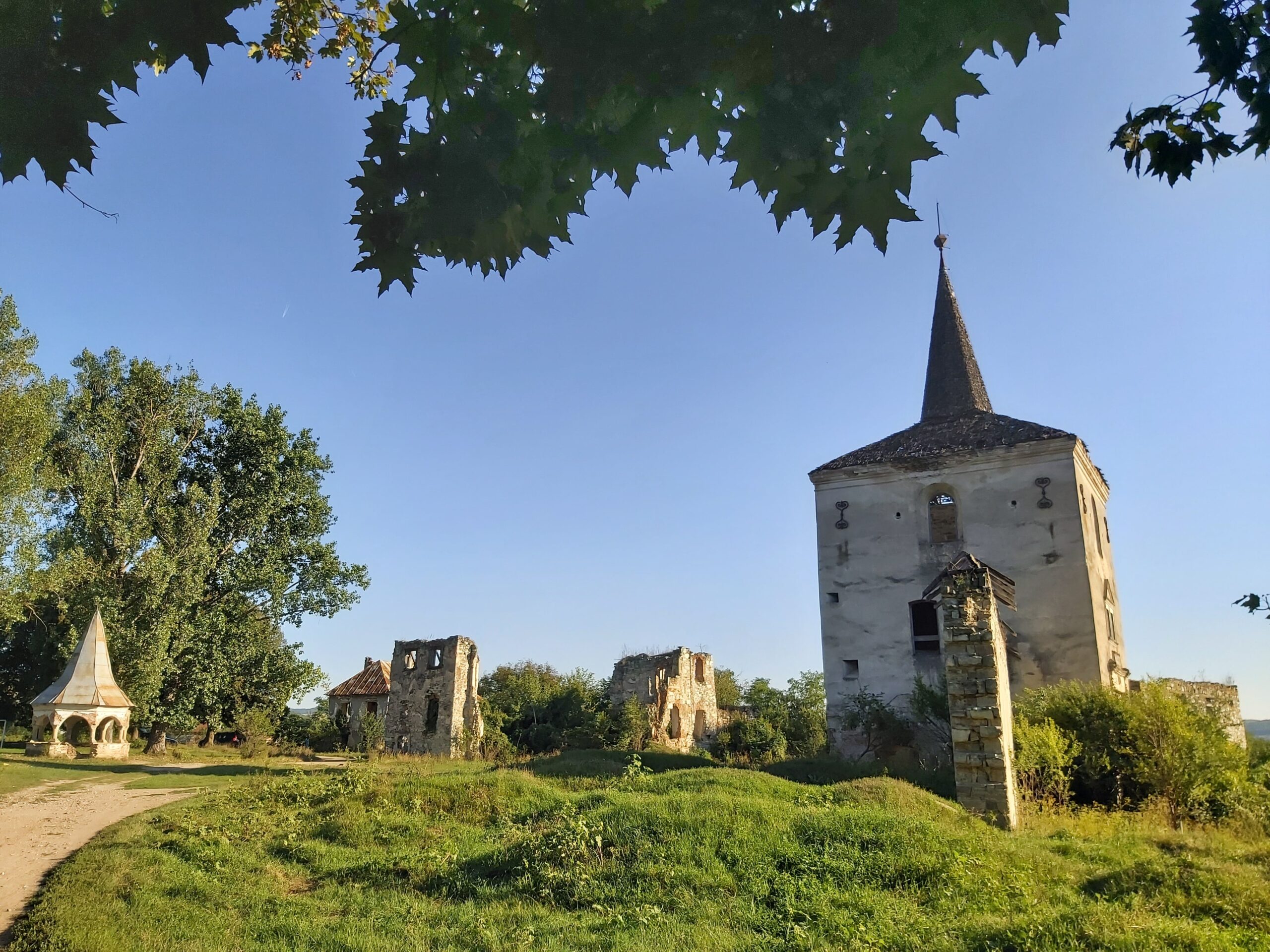Mănăstirea (Szentbenedek) – Cluj County
The village of Mănăstirea (Mica commune), formerly known as Benediug, located less than 5 km away from the city of Dej and about 10 km from the city of Gherla, preserves the ruins of one of the most beautiful Renaissance constructions in Transylvania. The Kornis Castle, colloquially known as the „unicorn castle”, was built between 1573 and 1593, on the site of a former Benedictine monastery.
The Kornis Castle, domain of a family with rich heritage in the Transylvanian elite
The story of the Renaissance castle begins in 1573 when the Prince of Transylvania, Stephen Báthory, donated the estate to Kristóf Keresztúry, the prefect of Dej, who would oversee the construction of the main building (1573-1593). The castle and the estate came into the ownership of the Kornis family in 1600 when Keresztúry’s daughter, Kata, married Boldizsár Kornis, the future prefect of Belső-Szolnok County, commander of Transylvanian troops, and a candidate for becoming the successor of Stephen Bocskai as the new Prince of Transylvania.
Over time, the castle was expanded with additional buildings. Gáspár Kornis added the upper floor to the main building, while his son, Zsigmond, completely renovated the construction in 1680. Zsigmond also needed to repair the castle again after it was damaged during Rákóczi’s War of Independence. The main entrance of the castle, completed in 1720 according to the inscription on the facade, is also associated with Zsigmond Kornis who was chosen by Holy Roman Emperor Charles VI as the Governor of Transylvania. In the same year, the two massive unicorns, symbols of the Kornis dynasty and also present on the family’s coat of arms, were placed on the edges of the suspended bridge in front of the main tower. This is the origin of the colloquial name of the monument — the „unicorn castle”.
According to historians, the buildings were not inhabited during the 19th and 20th centuries due to difficulties in heating. As a result, the family built a new adjacent classical style castle with 20 rooms and all modern facilities of that time. Despite other renovation work carried out over the decades, the fate of the castle was sealed during the Second World War when a significant portion of the buildings were destroyed. Furthermore, after nationalization, the library collection containing over 9.000 rare volumes was burned by the communists, right in the courtyard. The castle’s rich natural history collection was also destroyed and stolen.
The actual state of the Kornis Castle, far from its old ellegance
During the Romanian communist regime, the buildings were converted into silos, dormitory, and school. The chapel, built in 1520 in a late Gothic style, which belonged to the estate and where Kristóf Keresztúry is buried as well, initially passed to the Greek Catholic community in the village. In September 1993, it was reconsecrated and is now used as an Orthodox church. Apart from a superficial intervention between 1975-1976, the buildings were left to degrade, gradually overtaken by wildflower and garbage. Perhaps the best example is the octagonal fountain built in the castle’s courtyard, surrounded by circular pillars and arcades, but filled with junk.
In 2006, after a lengthy legal battle with the Romanian state, Countess Gabriella Kornis (1921-2014) regained ownership of the castle. However, the situation of the historical monument, officially included in the national heritage only in 2010, did not improve. Furthermore, in September 2016, the two unicorn statues, each weighing 1.5 tons, were knocked down in a failed theft attempt. They were later recovered by the current owner of the estate, Ferenc Géher, the son of Gabriella Kornis, and placed in a location known only to him. Consequently, the castle lost these unique attractions too due to malicious acts.
In the fall of 2018, the Téka Foundation from Gherla, the Kallós Zoltán Foundation from Răscruci, the castle’s owner, and students from the „Kemény Zsigmond” Theoretical High School in Gherla established the Kornis Castle Association. The declared objective is the complete restoration of the castle and its exploitation for public benefit. While local authorities have shown disinterest and reluctance regarding the renovation of the historical monument, lacking legal authority to intervene, hopes have turned towards the involvement of the Hungarian government or reaching an agreement between the owner and national and local authorities in Romania.
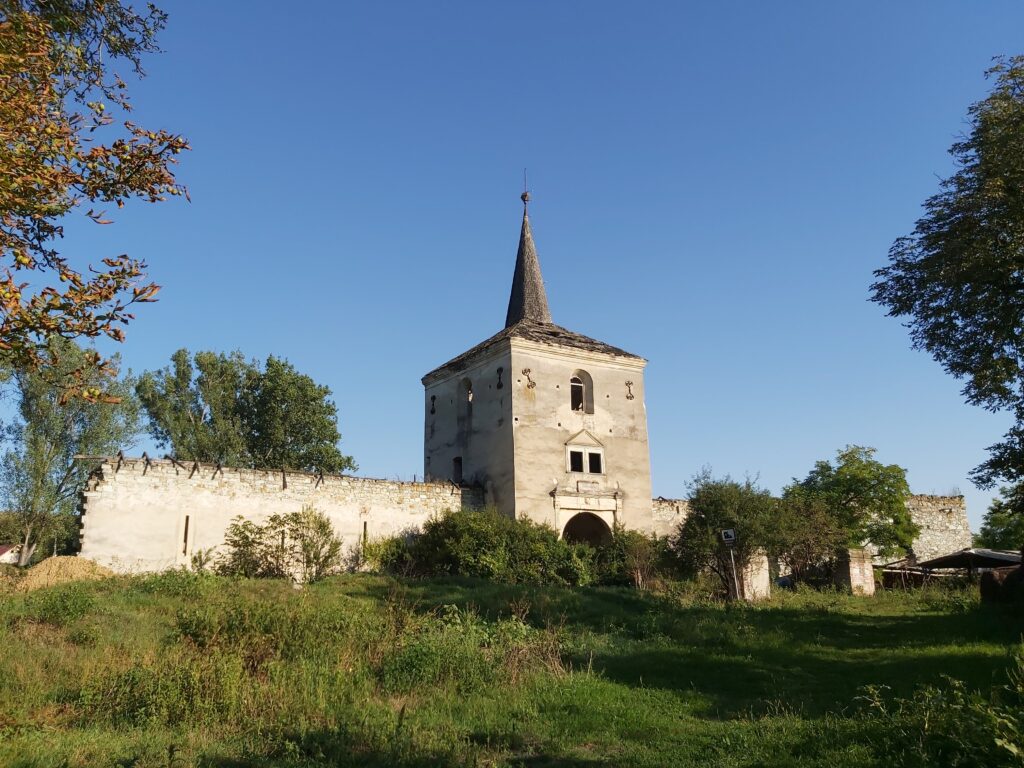
Although the castle grounds are private property and the ruins pose a major danger to everyone, especially to children playing in the area, access to Kornis Castle is practically open and unguarded. Being in the center of the village of Mănăstirea, the noble domain still attracts tourists even in its lamentable state. It only makes us wonder what a major point of interest it could become with a bit of trust, goodwill, and involvement…

